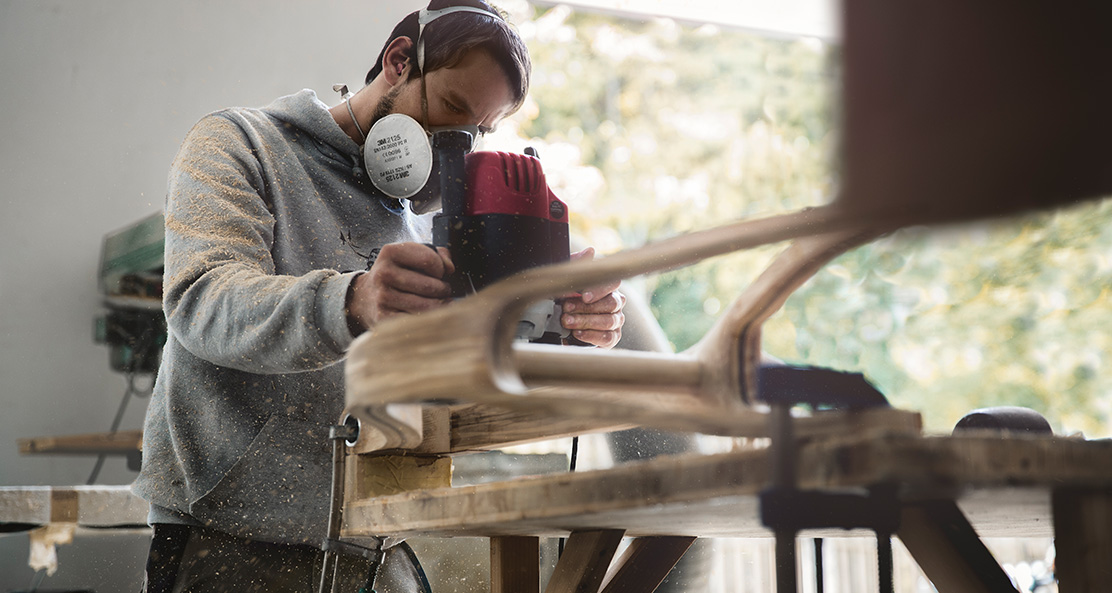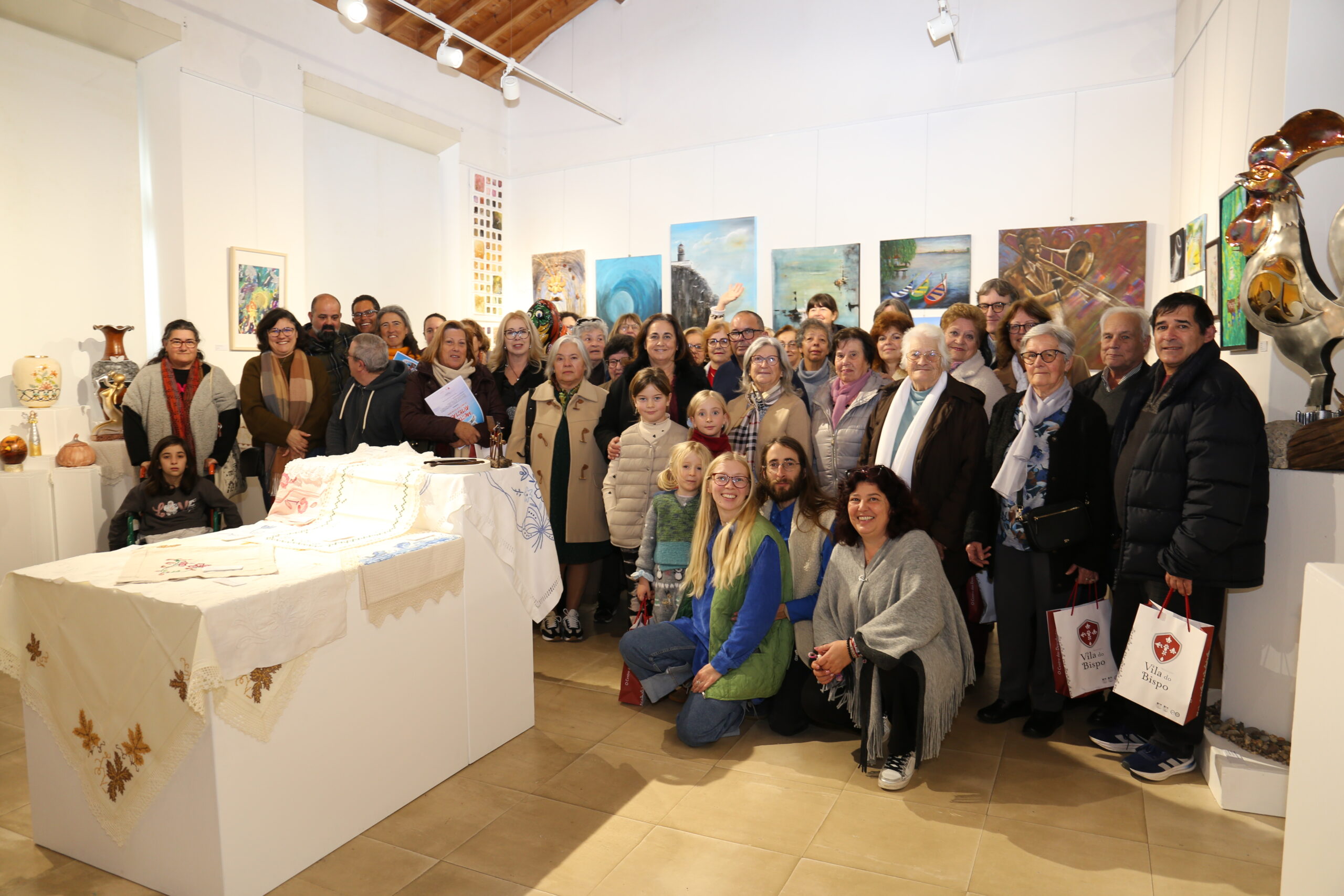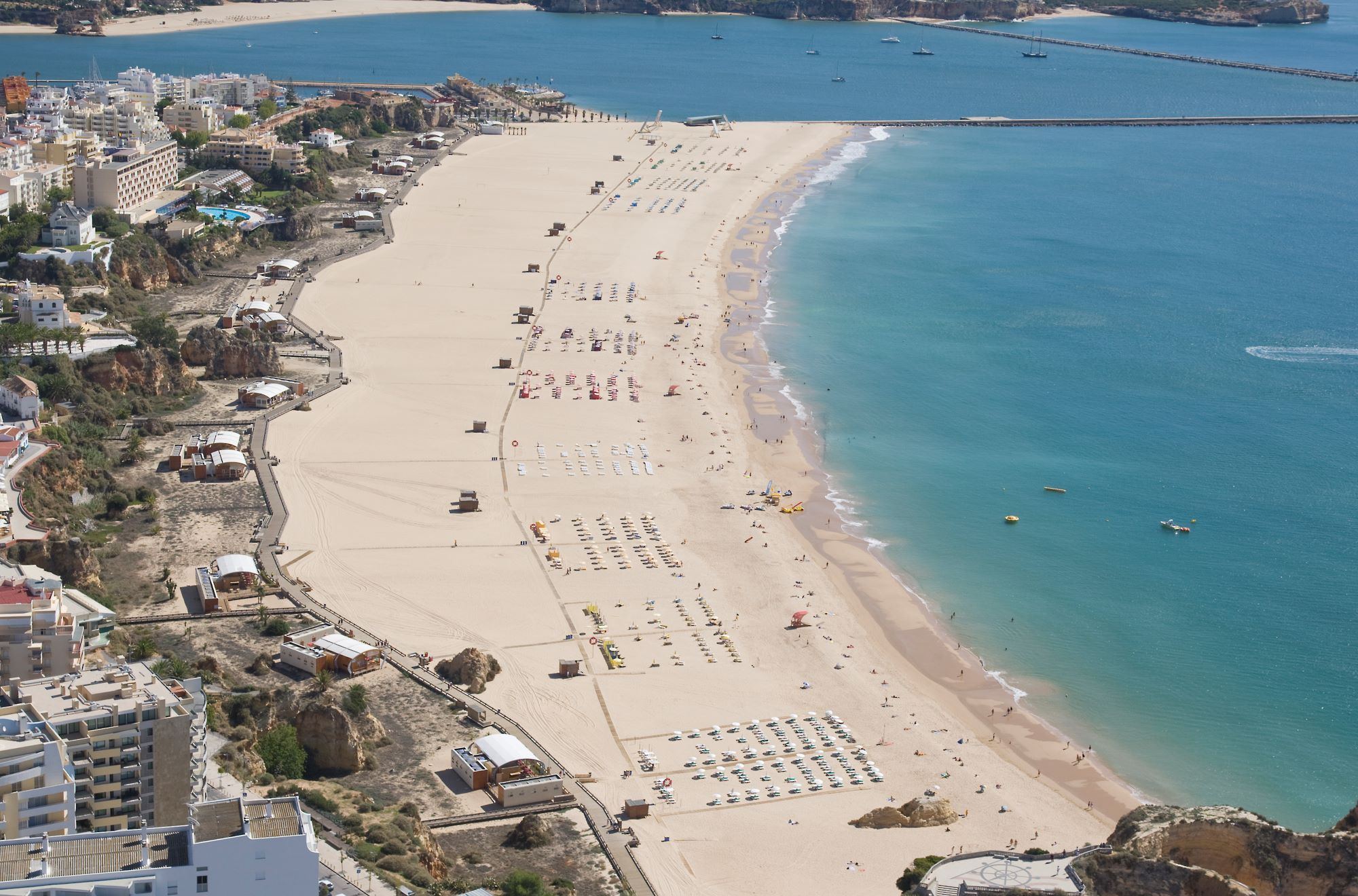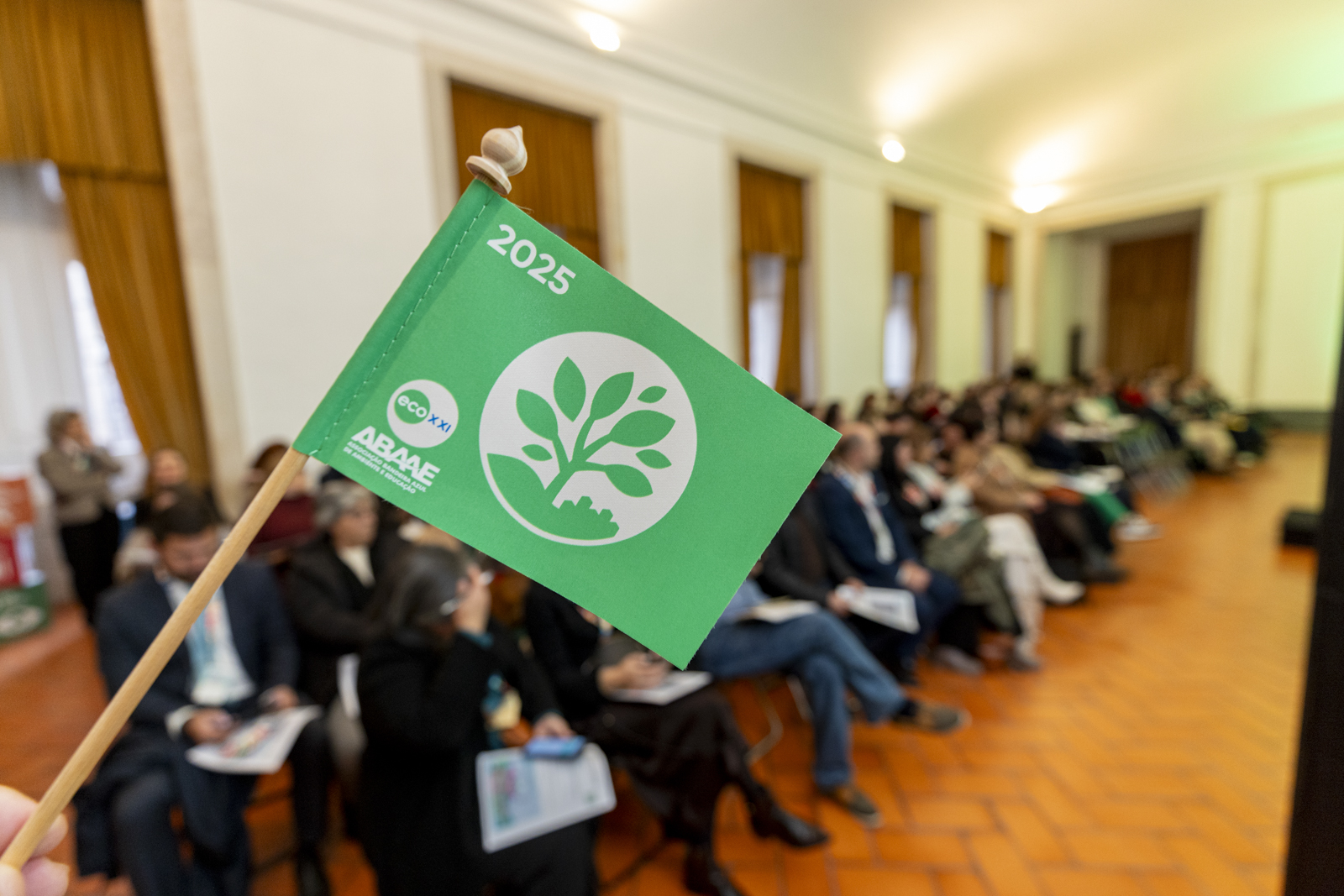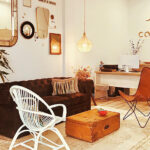By Stephanie Ginger
Bicycles from the Black Forest
It may have been growing up in the Black Forest that gave German carpenter, Raphael Much, his passion for wood; yet it’s in a workshop in Mexilhoeira da Carregação in Estômbar – a short ride from the sea – where Raphael now builds stunning hand-made wooden bicycles, bespoke high-end furniture and a lot more besides.
I’m meeting Raphael at the workshop he shares with fellow fine carpenter Ronald Kennedy and, coincidentally, this month they celebrate the first anniversary of their collaboration.
The short row of workshops is easy to miss, nestled as it is amongst the narrow, winding streets of residential Estômbar. Opposite, two storks perch high up on their chimney nest and I can smell the salty whiff of the Arade River in my nostrils.
I find Raphael inside his workshop, working at his bench. The first thing that strikes me is how young he appears, although he already has 10 years of woodwork experience under his belt, ranging from industrial and marine carpentry to house interiors, not to mention the bicycles I’ve come to see.
He’s never wanted to do anything else he explains. “I always wanted to create something with my hands. When it came to choosing a job, the only thing that came to my mind was a carpenter.”
He goes on. “My grandfather had really thick fingers, the hands of a craftsman. His hands told a story. When I am 70 or 80-years-old I would like to look at my hands and see the same thing.” I can’t help thinking that’s a long way off but his passion is palpable.
“My father always used to make everything at home,” he goes on. “I always tried to do things on my own and ended up having to go to him when it didn’t work out. Now, I’m finally at the stage where I can imagine something and know how to make it work.”
After leaving school, Raphael went on to do a three-year apprenticeship in industrial carpentry. Although the work wasn’t as ‘hands on’ as he would have liked, the training in Germany is excellent. “To learn every process from start to finish is really good,” he says with a smile “and once you know those processes you can transfer them to different areas, like making bicycles.”
But it’s a world apart isn’t it – making chipboard furniture and melamine kitchens in the Black Forest to creating bespoke fine furniture and heirloom bicycles by the sea? So what led him to sunny Portugal?
“Surfing!” Raphael laughs. Given the Algarve environment of sun and sea, it’s a familiar story but I have to admit not one I was expecting. Raphael fills me in. “It was April 2008 and I thought that maybe this wasn’t what I wanted to do for the rest of my life. So I took six months leave from my employer in Germany and came to Portugal to learn to surf.”
But after six months the pull of the waves was as strong as ever and in his own words Raphael wasn’t quite ‘done’ so he went to New Zealand for a further six-months of surfing. However, man cannot live on air and water alone and Raphael never lost sight of his relationship with wood. A temporary job as a carpenter in a sawmill sorted out the practicalities and gave him valuable wood-working experience of a completely different sort.
“Everything in New Zealand was a complete contrast to everything I’d learned in Germany,” he chuckles. “There were just the three of us; my sixty-two year-old boss, another employee also in his sixties and me!”
“I had a belt with seven different pockets and in each pocket there were different lengths of nail. With those I would make whatever was required; tables, chairs, pergolas, dog-kennels and chicken runs.”
By 2009 Raphael was back in Portugal for another surfing season and by the end of it he’d made the decision not to return to Germany and his ever-hopeful employer. Instead, he found work with South-West Shiprights in Portimão, fitting out interiors and maintaining boats. Raphael admits that was when he really learned how to carpenter by hand and crucially perfected the skills necessary to make his bikes. “We didn’t have any of the big computer-controlled machines that are usually used in Germany these days, so we had to hand craft the curved furniture that’s needed in the boat-building profession ourselves. And if you can build a three-dimensional shape from wood you can build anything. ” It was also at South-West Shiprights that Raphael first met Ronald Kennedy.
And Raphael might indeed be there still if it hadn’t been for the economic downturn and a chance phone conversation with his brother in 2012.
His brother, an engineer, had always been a big bicycle fan and had been thinking about building a wooden bicycle for a couple of years. He’d seen one but was convinced Raphael could do better and set him the task.
Raphael rose to the challenge and built his first wooden prototype while still in Portugal. But in order to move forward commercially, he and his Portuguese girlfriend needed to return to Germany and steady employment. Fortunately, his long-suffering previous employer was happy to take him on once more and Raphael worked for eighteen months on the design. By August 2013 he had completed a mountain bike and a city bike and was ready to take orders.
But isn’t a wooden bike very heavy?
Not at all, Raphael explains. Wood is very strong in comparison with its weight. The extraordinary fact is that his racing bike frame, for example, weighs in at only 2.1 kg. His design means that he builds up the wood from more than 30 thin layers of wood cut and glued together, then sanded and shaped into a hollow frame for maximum strength and flexibility. “There isn’t a straight edge anywhere,” he explains, “that’s what I love about it.”
Different woods have different qualities: the paler German Ash on the outer layers contrasts well with a finer wood on the inner; the strong lively character of walnut or the dark red elegance of mahogany.
“By playing with different kinds of wood we can offer the individual customer a bike that suits not only their size, riding style and terrain but also their character.”
Each bike takes between sixty and seventy hours to make and costs from €4,290 but will last a lifetime. In these ‘throwaway’ times when everything from clothes to cars seem to have built-in obsolescence, Raphael’s commitment to timelessness and longevity is refreshing. “50 years ago, my grandmother would buy a piece of furniture and she would appreciate it for 20, 30 or even 40 years! Nowadays people buy a kitchen from Ikea and five years later they’ll throw it out.”
Not so with Raphael’s bikes. He’s still in touch with the customer who bought that first mountain bike five years ago. He is 1.95 metres tall and weighs 95 kilos” He’s crossed the Alps with it twice and uses it on a daily basis, he tells me proudly. “So I think it’s safe to say that they last!”
Add to this, the advantage of being able to sand down and re-varnish any bumps and scratches and you have a unique and individual piece that will last for years.
Building bicycles is only fifty percent of Raphael’s business and he hopes that demand for his bespoke design and build service, LJ Woodworks, supplying stylish and beautifully-made interior furniture for discerning customers will increase over the coming year.
But it’s not all about work, Raphael insists. It’s also about finding a satisfactory work life balance. To that end, just over a year ago he and his girlfriend decided to move back to Portugal.
Joining forces with Ronnie in the workshop is part of finding that balance. Ronnie’s specialism in luxury carpentry, marine carpentry and boat interiors as well as making unique pieces to order such as ornate keepsake boxes in fine woods dovetails nicely with Raphael’s bespoke joinery and hand-made bicycles. I can see that in the graceful curve of wooden handlebars beside the intricate geometry of a yacht deck, stacked like an oversize jigsaw puzzle. Working independently or together, if necessary, pooling their resources and talents in the same workshop makes perfect sense.
Raphael enjoys working on individual projects directly with the client from concept to completion, but is also keen to work with architects on bigger design projects. Like the one for Studio ARTE, high-end architects in Portimão for whom he’s currently building a custom-designed contemporary bed and library archive for an elegant town house renovation.
Although their workshop is fully-equipped and set up for traditional carpentry using veneers and solid wood, they also work with contemporary materials like MDF as well. For large projects such as stores or hotels, Raphael can source multiple quality furniture from a high-end industrial carpentry company in Germany to support the work they do in Estômbar.
“I get a lot of pleasure applying traditional methods and skills to a contemporary project,” he says. “That way you have the best of both worlds.”
And Raphael does seem to be on the way to having both. He grins. “Oh absolutely! To be able to surf in the morning and build beautiful things for people the rest of the time. For me, that would be the best of both worlds!”
lj-woodworks.com
kennedyfinecarpentry.com
Lot L, Quinta da São Pedro, Mexilhoera da Carregação
This article was originaly posted in the March 2018 edition.
CRAFTED BY NATURE from Michael Kotowski on Vimeo.


